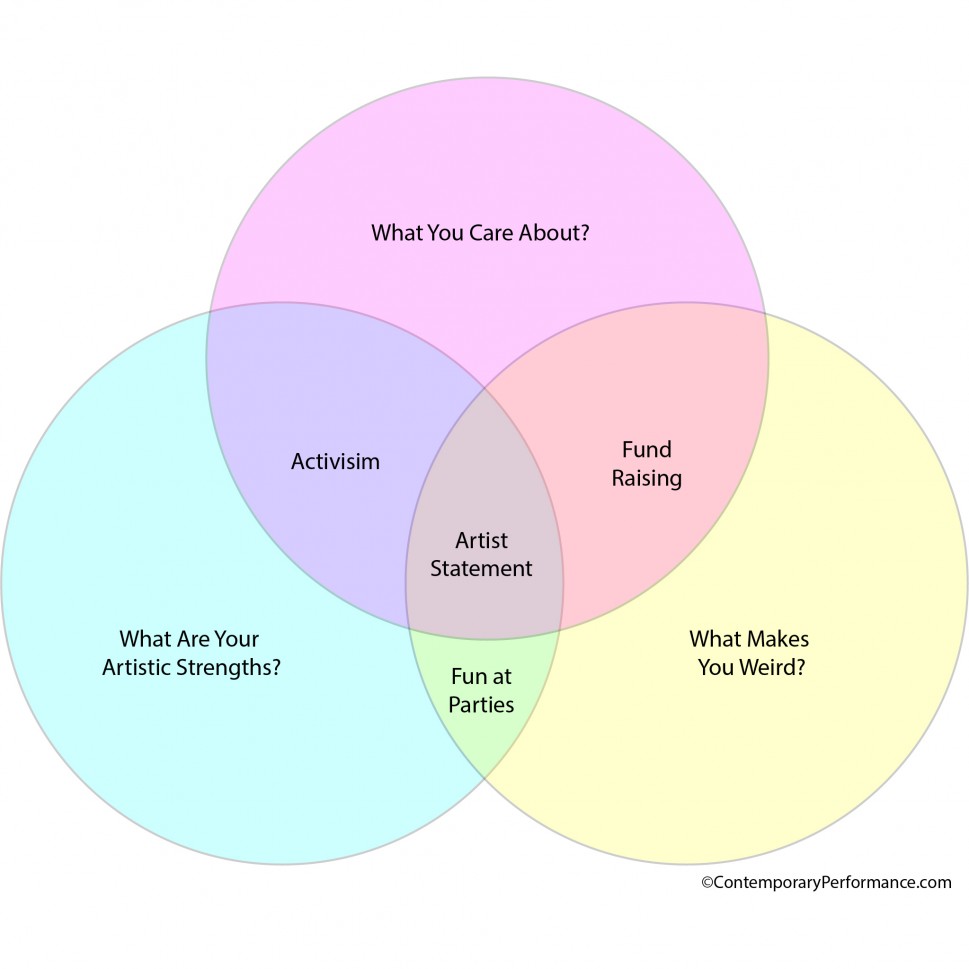It is a good time to sit down and think more intentionally about how we organize the hard part of our practice. ARTISTIC/PROFESSIONAL ORGANIZING.
Below is the second post (part of a series) about getting your artistic house in order.
Artist Statements are one of the most important and frustrating documents for an artist or company to create. One way of relieving the anxiety around writing one is to come to terms with the fact that it is not a final document and will never be complete. It is alive and changing for as long as the artist is making work. Still, it is an intense document to start as it is both succinct, needing to be under a page, and all-encompassing, needing to clearly state the artist’s intention, history, and forms. Below we have gathered a few techniques to help get you started or to take the opportunity to update your already existing Artist Statement.
Step one: Open up your notebook (if you don’t have one, think about always having one with you, or use your notes app on our phone). We recommend you keep it with you at all times. Use it to gather your ideas (as you have them) and notate books you want to read, art you want to see, shows that are coming up. Take a page and quickly write down your answers to these prompts. You shouldn’t take longer than 5 minutes on each prompt.
- List 10 superpowers (artistic, personal, and organizational strengths)?
- List 10 things you care deeply about?
- List 10 things that make you “weird” (things that make you unique or even othered)?
After you have written these out, take a look at our Venn Diagram. The intersection of these three ideas are the bases of your artist statement. Your Strengths + Your Concerns + Your Uniqueness = Your art. This is a very simplified idea, but it should get you going.
Step 2: Take another 10 minutes and a page in your notebook and do some automatic writing about how these vectors intersect in your work.

Step 3: Next up, take another page and answer these questions.
- Where are you from and where do you make your work?
- What forms and or materials do you use?
- Where have you shown your work?
- What awards and or grants have you received?
Step 4: You are well on your way. By now you have created alot of text specific to who you are as an artist. Now try to piece it together. On another page in your artist notebook, collect and write down, in the third person:
Paragraph 1:
Your name, where you are from and where you make work (from Step 3). From Step 2, write down a sentence or two about the intersection of your strength, care, and weird statements. From Step 3, follow up with your forms and materials.
Paragraph 2:
Write down a description of how your statement and forms/materials from the 1st paragraph can be found in a past work or a few (this can be up to two paragraphs).
Paragraph 3 or 4:
From Step 3, write a paragraph about your other past works, the places they were shown, any awards or grants you have received and your current work.
Now you have your working Artistic Statement. Please ask any questions in the comments section.
Our next post will be about how to make a short artist bio (hint, pull it from your artist statement). Let us know if you want to add to any of the above information and we can update this post as ideas come in. We wish you a year full of inspiration, productivity and art!
Future Productivity Posts in the Series
- Create/Reorganize Your Artist/Company Website
- Create/Update Your Artist Statement
- How to Set Up a Creative Practice Notebook (That You’ll Actually Use)
- CV Maintenance: The Key to Being Ready for Opportunities
- 5 Things to Consider When Running an Artist’s Email List
- 5 Steps to Building and Maintaining a Contemporary Performing Artist’s Social Media
- 10 Secrets To Getting Your Work Noticed, Attended, Presented, and Toured
*We linked to our favorite notebook above, LEUCHTTURM1917. Its awesome and comes in many colors and sizes, has a back pocket, numbered pages, lined, dotted, blank, or gridded paper, and a strap to keep it closed. Our link is an affiliate link. If you purchase one, Contemporary Performance Network receives a percentage that will go a long way in supporting us and keeping access to our website and network free. Also please donate, any amount helps us keep great content and access to opportunities coming your way on our pages.

